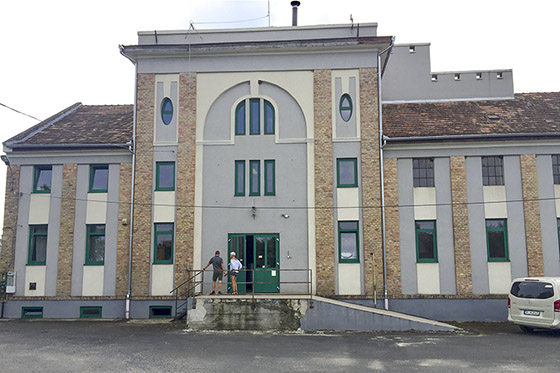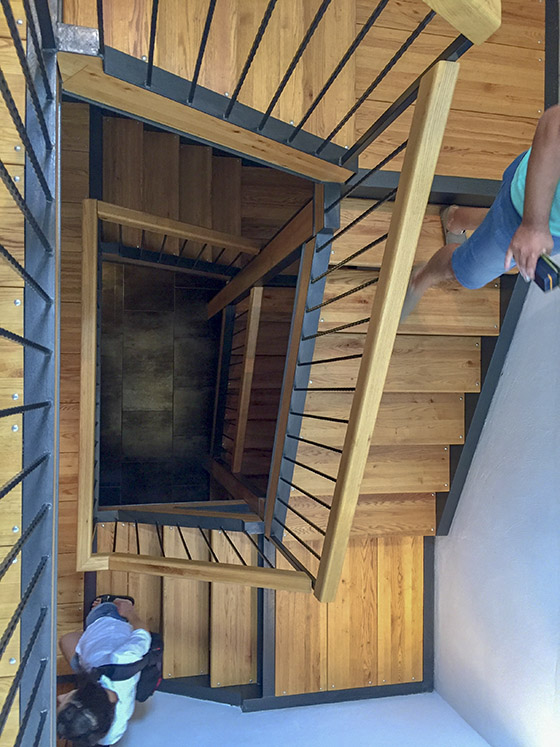If you drive along Gyár utca in Zalaszengrót without really paying attention, you could easily sail past the multi-storey building of the former Gschwindt spirit, yeast, liqueur and rum factory. At first glance, the former central distillery building dating from the beginning of the 1900s certainly doesn’t appear to be a winery; only the small, faded sign next to the main gate confirms that you are in the right place if you are in search of wine. However, the situation quickly changes. Entering the high-ceilinged reception hall, you immediately find yourself in the tank room; wooden barrels are lined up in the cellar, and everything is spick and span. This is hardly surprising either in a winery which produces the private label rosé for the best-known chain of Hungarian wine merchants, but let’s not get ahead of ourselves here.

Photo: Daniel Ercsey
In the area around Zalaszentgrót , table grapes soon came to dominate production after phylloxera, with the state cooperative farm believing in Saszla too (which although indeed a table grape, did not prevent the Swiss producers from turning it into a wine grape know all over the world by its original name Chasselas, thus reinventing their country image), with just marginal plantings of Olaszrizling and Chardonnay. Éva Dóka’s father bought half a hectare of the latter, which the winery named after his daughter then outgrew.

Photo: Daniel Ercsey
They really got started at the end of the nineties and they now boast 25-30 hectares of vines (4 hectares of new plantations), refrigerated stainless steel tanks and if all goes well, the air-conditioned barrel room will also be ready within a year or two. Until then, however, there’s still the wines, the grapes for which arrive for processing from the nearby Csáford Hill and from further south from Orosztony near the Small Balaton. In the original set-up, Éva was the company’s winemaker, but now her husband, Róbert, makes the wines.

Photo: Daniel Ercsey
The next surprise, besides the quality of the wines, hit us as we were discussing the grape varieties. “In Orosztony, Furmint, Hárselvelű and Kabar”, said Robi, and we took the words out of each other’s mouths. You’re not saying a Tokaj winemaker has moved to Zala?! Well, I don’t know, but what is certain is that both the Furmint and the Kabar showed well at the tasting, although they were no competition for the Olaszrizling, at least not there, with the Zala terroir in the background. Since last year, as well as white wines, rosé and a little red, they also make a semi-sparkling wine, but knowing the region’s past, this is not particularly surprising either. Zala’s grapes were once sold to Pécs for sparkling wines and to Badacsony for still wine. This is no wonder, as Zala is one of the country’s wettest regions, which fosters the preservation of acidity and freshness in the wines.

Photo: Daniel Ercsey
Do you want to know something else that’s surprising? The tasting room is not on the ground floor, nor in the cellar, but has rather been created in the former distillery’s attic, retaining the original floor structure. An elegant space with everything needed to taste all Éva and Robi’s wines in comfort. Don’t wait too long as their names already appear in the Wines of Excellence book, so we can’t nurse the belief for much longer that we have a ‘secret favourite’ in the case of wine…






